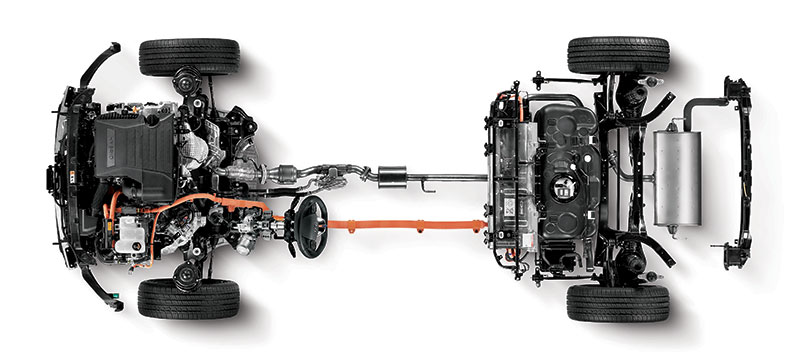Hybrid
Over 20 years ago, the first hybrid car was offered by an international manufacturer: Even then, the car achieved particularly low fuel consumption thanks to the combination of combustion engine and electric motor. Today, and today they make a significant contribution to reducing CO2 emissions. In 2021 alone, international manufacturers sold over 205,000 hybrid cars in Germany.

25 percent less fuel consumption
Hybrid vehicles combine a conventional petrol engine with an electric drive. Their intelligent interaction enables significant fuel savings, reduced exhaust emissions and a special driving experience. The hybrid system automatically uses the optimum drive in every driving situation. At speeds of up to about 50 km/h, hybrids can drive short distances purely electrically. At higher speeds or when driving faster, they use the combined power of electric and combustion engines. For example, the vehicle is sometimes driven purely electrically or can call up additional power dynamically.
The hybrid can play off its advantages particularly in dense city traffic with changing speeds and frequent stop-and-go. During braking, kinetic energy is converted into electrical energy. This charges the battery, while conventional vehicles simply lose braking energy. Full hybrids generally consume around 25 percent less fuel than comparable petrol models.
Various hybrid variants
The international manufacturers rely above all on full hybrids – i.e. vehicles whose additional electric motor is strong enough to drive the vehicle purely electrically. So-called mild hybrids (MHEVs) are also frequently referred to as hybrids. The main difference to full hybrids is that mild hybrids cannot drive fully electrically. The combustion engine is only supported by an electric motor. At low speeds or when stationary, the combustion engine can switch itself off. The starter generator with 48 volts restarts the engine automatically if necessary. However, fuel consumption can be reduced by relieving the load on the petrol engine. However, the savings are significantly lower than with the full hybrid.
Plug-in hybrid are a another hybrid variant. The hybrid battery is charged via a plug (“plug in”) and has a larger capacity, so that significantly longer distances can be covered purely electrically.


